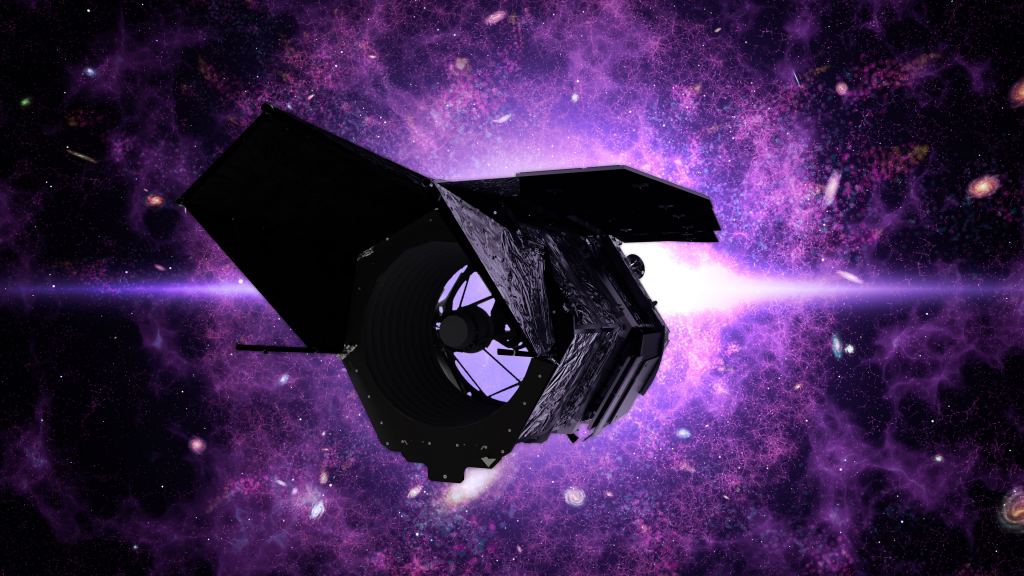In 2026, the Nancy Grace Roman Space Telescope (RST) – aka. the “Mother of Hubble” – will take to space and begin addressing some of the deepest mysteries of the Universe. This will include capturing the deepest field images of the cosmos, refining measurements of the Hubble Constant (aka.
Hubble’s Law), and determining the role of Dark Matter and Dark Energy in the evolution of the cosmos. Alongside its next-generation partner, the James Webb Space Telescope (JWST), the RST will acquire infrared images with over 200 times the surveying power of its predecessor with the same rich level of detail. On Tuesday, July 19th, NASA announced that it had awarded SpaceX with a Launch Services (NLS) II contract to provide the rocket that will deploy the RST mission to space.
As specified in the NLS II, the launch will take place in October 2026 (May 2027, at the latest) and consist of a Falcon Heavy rocket transporting the RST from Launch Complex 39A at NASA’s Kennedy Space Center to orbit. This indefinite-delivery/indefinite-quantity contract is valued at approximately $255 million and covers the launch and other mission-related costs. Previously known as the Wide-Field InfraRed Survey Telescope (WFIRST), the RST was originally proposed in 2010 as a successor to Hubble.
The proposal was based on the same design as Hubble, with a 2. 4-meter (7. 9-foot) field of view primary mirror and two scientific instruments.
This includes the Wide-Field Instrument (WFI), a 300. 8-megapixel camera covering the visible and near-infrared spectrum, and the Coronograph Instrument (CGI) – a high-contrast spectrometer that incorporates starlight-suppression technology. In May 2020, NASA renamed the telescope to honor Dr.
Nancy Grace Roman, NASA’s first Chief Astronomer and a tireless advocate for space-based astronomy. By March 2021, NASA announced that the RST would be getting an upgrade with the addition of a K-band filter. This effectively expands the RST’s infrared imaging range to 0.
5 to 23 micrometers – 500 to 23,000 nanometers (nm) – ranging from the near- to the far-infrared spectrum. With these capabilities, the RST’s science program will include dedicated investigations addressing several enduring mysteries in modern cosmology. These include the study and characterization of exoplanets, which will narrow the search for habitable planets and Earth analogs and complete the census of exoplanets.
In particular, the RST will use its tremendous field of view to detect thousands of smaller, rocky planets that orbit closely to their parent stars – in their habitable zones (HZs). These planets will be designated for follow-up observations by Webb, which will use its extremely-sensitive IR optics to obtain spectra from their atmospheres and surfaces. Its powerful optics will also conduct the deepest surveys of the Universe to reveal the earliest stars and galaxies, which formed roughly 100 million years after the Big Bang.
These scientific operations will complement the ESA’s EUCLID mission and allow astronomers to investigate possible causes of cosmic acceleration. Current theories include the existence of Dark Energy or Modified Newtonian Gravity (MOND), which states that General Relativity breaks down on cosmological scales. These operations will also address questions about the fate of the Universe, like if it will tear itself apart someday (the Big Rip theory).
The telescope’s wide-field surveys will also enable new studies into the nature of Dark Matter and its role in cosmic evolution. Furthermore, the RST mission also includes a substantial general investigator program that will allow for further studies of astrophysical phenomena. This will enable opportunities to collaborate with other science missions and space agencies and advance other scientific goals.
This is very good news for NASA, its partner agencies, and space-based astronomy fans! Artist’s impression of the Nancy Grace Roman space telescope (formerly WFIRST). Credit: NASA/GSFC After years of waiting for James Webb to get to space and start shooting the most breathtaking and detailed images ever seen, it’s encouraging to know that the next next-generation telescope is not far behind. While delays are always possible, Roman’s comparatively simple design will likely make for a speedier launch schedule.
It’s also good news for SpaceX, which has secured many high-priority and lucrative contracts with NASA in recent years. These include contracts to build the Human Landing System (HLS) for the Artemis Program – the Starship HLS – that will transport “the first woman and the first person of color” to the lunar surface by 2025. It also includes the launch services for the Lunar Gateway, which will consist of the core elements – Power and Propulsion Element (PPE) and the Habitation and Logistics Outpost (HALO) – launching in 2024 (also using a Falcon Heavy rocket).
Further Reading: NASA The post Nancy Grace Roman Will be Launching on a Falcon Heavy Rocket appeared first on Universe Today. .
From: universetoday
URL: https://www.universetoday.com/156847/nancy-grace-roman-will-be-launching-on-a-falcon-heavy-rocket/



